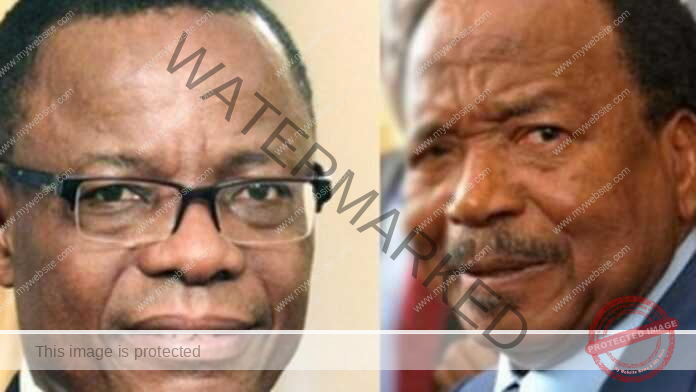Paul Biya, under Siege by the Bulu-Beti oligarchy. Maurice Kamto, symbolically potent but ultimately toothless.
By Editorial desk- The Independentist
Sigmond Fraser’s article delivers a bold and incisive critique of the current political landscape in Cameroon, exposing layers of power manipulation, foreign interference, elite dominance, and popular suppression ahead of the October 12th, 2025 presidential election. The piece is rich in geopolitical insight and unflinching in its indictment of both domestic and international actors complicit in the erosion of democratic ideals.
- Structure and Tone
The article is structured like a political thriller—each section peeling back layers of obfuscation to reveal a deeply compromised state. The tone is assertive and investigative, yet careful not to veer into hyperbole. The language is urgent, calculated, and evocative, targeting a politically literate audience familiar with postcolonial African politics, especially the Françafrique context. - Key Themes and Their Implications
A. The Deep State and the Bulu-Beti Oligarchy
The article foregrounds the Bulu-Beti elite as the dominant force behind the Cameroonian state. Fraser describes a “complex machinery” that keeps President Biya’s rule functioning on autopilot—despite his advanced age and growing irrelevance. The implication here is that Cameroon’s democratic process has been hijacked, with elections serving as mere ceremonial rituals orchestrated by a cabal of power brokers.
This elite capture reflects a broader African pattern where state institutions are weaponized for ethnic preservation and personal gain.
B. France’s Neocolonial Leverage
The article’s most scathing indictment is reserved for France, portrayed as an empire in decline desperately clinging to Cameroon as one of its last strategic assets. Fraser exposes France’s backchannel dealings—from media manipulation to diplomatic engineering—as an effort to maintain access to resources and influence.
By juxtaposing France’s recent ejections from Mali, Niger, and Burkina Faso with its grip on Yaoundé, Fraser draws a powerful image of a wounded beast defending its last fort.
C. Corporate Complicity
Fraser astutely links multinational corporations to the status quo. These entities, fearing reformist leaders like Maurice Kamto, are described as financially supporting “stability efforts” which in effect prolong elite rule. This intersection of global capitalism and local authoritarianism is a critical revelation—the so-called guardians of global order are underwriting oppression for profit.
D. Maurice Kamto: Hero or Hollow Hope?
While Kamto is acknowledged as a reformist figure, Fraser injects a controversial twist by likening him to Ni John Fru Ndi—a figure seen by many as symbolically potent but ultimately toothless. This ambivalence challenges readers to think critically about the effectiveness of opposition leaders in Cameroon and the illusion of reform under French gaze.
E. The Ambazonian Factor
Perhaps the most politically delicate section, Fraser addresses the Ambazonian independence war with nuance. He notes the rise of Dr. Samuel Ikome Sako as the rallying point after the decapitation of earlier leadership. Fraser subtly acknowledges the war as a major threat to Yaoundé’s legitimacy and a wild card in the succession drama.
Importantly, the regime’s use of the “security threat” narrative is unpacked as both a distraction and justification for repression—a propaganda tactic France appears willing to overlook.
F. North-South Ethnic Faultlines
The article exposes suppressed northern resentment over Bulu-Beti domination. By referencing figures like Marafa Hamidou Yaya, Fraser points to deep-rooted Fulani-Hausa grievances which could resurface in unpredictable ways if the ruling elite attempts another undemocratic succession.
- Strategic Forecast and Warnings
Fraser provides a grim outlook should the current elite prevail:
A puppet presidency (e.g., Ferdinand Ngoh Ngoh)
Continued erosion of civil liberties and democratic function
Rising anti-French sentiment and possibly violent backlash
Greater instability from Ambazonian forces and northern factions
Heightened persecution of opposition voices
This forecast is not alarmist—it is grounded in observable trends across the region and echoes similar outcomes in other postcolonial autocracies.
- Critical Observations and Possible LimitationsKamto’s Weaknesses: While the article rightly challenges Kamto’s efficacy, it risks undermining his symbolic value to Cameroonian urban youth and the diaspora without offering a viable alternative.
Ambazonia’s Role: The treatment of the Ambazonian movement is accurate but restrained. While the leadership consolidation around Dr. Sako is noted, the article doesn’t fully explore Ambazonia’s growing international diplomacy and humanitarian leverage.
International Silence: Fraser’s frustration with France is clear, but Western complicity beyond France—especially the US, UK, and Germany—is only implied.
- Conclusion: A Battle Between Agency and Autopilot
Fraser concludes that Cameroon’s October 12 election is less a democratic event and more a referendum on whether hidden elites and foreign powers will continue to dictate the fate of an entire people. His analysis challenges the reader to interrogate the myth of independence, the façade of electoral legitimacy, and the inertia of international actors who preach democracy but fund dictatorship.
Final Verdict:
Sigmond Fraser’s piece is a powerful exposé—anchored in political realism, unafraid to name names, and urgent in tone. It is a must-read for those interested in postcolonial governance, Françafrique dynamics, and the fraught road toward African self-determination.
Editorial desk

